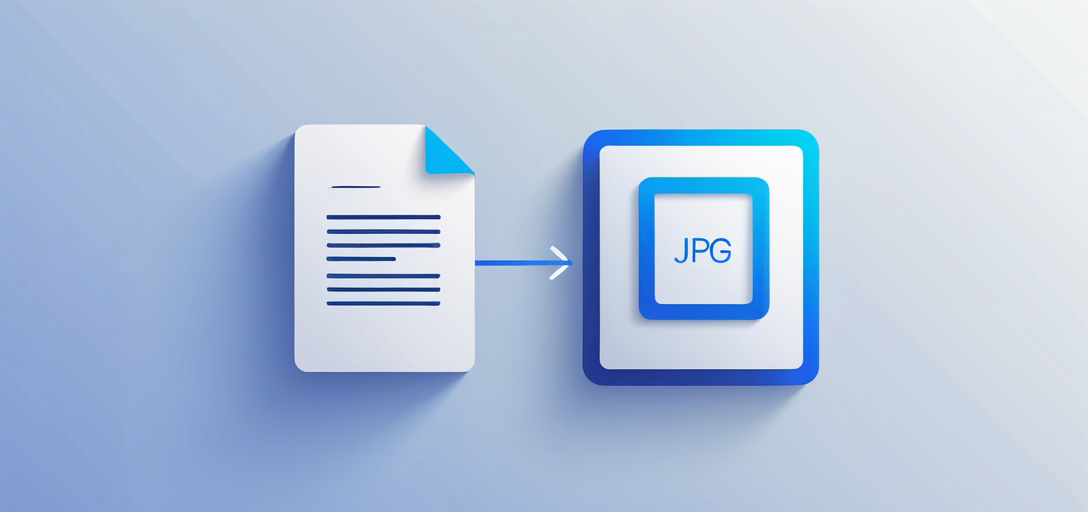Convert Documents to JPG with GroupDocs.Viewer for .NET: A Comprehensive Guide
Introduction
Converting documents into JPG images can significantly enhance accessibility and compatibility across platforms, making document distribution easier. This tutorial guides you through using GroupDocs.Viewer for .NET to render documents as JPG—a critical skill for developers.

What You’ll Learn:
- Setting up GroupDocs.Viewer for .NET
- Step-by-step instructions on rendering documents to JPG
- Key configuration options and troubleshooting tips
- Real-world applications of this feature
Before we dive into the setup, let’s review some prerequisites!
Prerequisites
Ensure your development environment is ready with these components:
Required Libraries and Dependencies:
- GroupDocs.Viewer for .NET: The library used to render documents.
- .NET Framework or .NET Core: Ensure you have the appropriate version installed.
Environment Setup Requirements:
- A compatible IDE like Visual Studio
- Access to a document (e.g., DOCX, PDF) that you want to convert
Knowledge Prerequisites:
- Basic understanding of C# and .NET programming
- Familiarity with file I/O operations in .NET
Setting Up GroupDocs.Viewer for .NET
Install GroupDocs.Viewer for .NET using the following methods:
Using NuGet Package Manager Console:
Install-Package GroupDocs.Viewer -Version 25.3.0
Using .NET CLI:
dotnet add package GroupDocs.Viewer --version 25.3.0
License Acquisition:
- Free Trial: Start with a free trial to explore the library’s capabilities.
- Temporary License: Apply for a temporary license if you need extended access during development.
- Purchase License: Consider purchasing a full license for production use.
Initialization and Setup:
To initialize GroupDocs.Viewer in your project, include the necessary using directives and instantiate the Viewer object. Here’s a simple setup:
using System;
using GroupDocs.Viewer;
class Program
{
static void Main()
{
// Initialize Viewer with the path to your document
using (Viewer viewer = new Viewer("Sample.docx"))
{
// Your rendering code will go here
}
}
}
Implementation Guide
Let’s walk through the process of rendering documents into JPG images.
Rendering Documents as JPG Images
This feature allows you to convert each page of your document into a separate JPG file, perfect for when image files are preferred over traditional document formats.
Step 1: Define Output Directory and File Naming
Set up the output directory where the rendered images will be saved and define a format for naming these files.
string outputDirectory = Path.Combine("YOUR_OUTPUT_DIRECTORY", "RenderedImages");
if (!Directory.Exists(outputDirectory))
{
Directory.CreateDirectory(outputDirectory);
}
string pageFilePathFormat = Path.Combine(outputDirectory, "page_{0}.jpg");
Why This Step? Ensuring the directory exists and setting a consistent file naming format helps maintain organization in your output files.
Step 2: Configure Viewer Object
Instantiate the Viewer object with the path to your document. Use this viewer instance to render pages as images.
using (Viewer viewer = new Viewer(Path.Combine("YOUR_DOCUMENT_DIRECTORY", "Sample.docx")))
{
// Rendering configurations will follow here
}
Why This Step? The Viewer object acts as a bridge between your document and the rendering logic, enabling you to apply various view options.
Step 3: Configure JPG View Options
Set up JpgViewOptions to specify how each page should be rendered into a JPG file.
JpgViewOptions options = new JpgViewOptions(pageFilePathFormat);
Why This Step?
The JpgViewOptions class allows you to control the rendering process, including specifying output paths and formats.
Step 4: Render Document Pages
Execute the rendering operation by calling the View method on your viewer instance with the specified options.
viewer.View(options);
Why This Step? This step processes each page of the document using the defined JPG view options, outputting them as image files to the designated directory.
Troubleshooting Tips:
- Ensure the document path is correct and accessible.
- Verify that your application has write permissions for the output directory.
- If rendering fails, check if there are any unsupported features in the document format being used.
Practical Applications
Rendering documents to JPG images using GroupDocs.Viewer can be beneficial in various scenarios:
- Archiving: Store documents as images for secure and compact archiving.
- Web Integration: Display document previews on websites without requiring full document viewers.
- Sharing: Easily share pages of a document via email or messaging platforms that support image formats.
Integration Possibilities:
- Combine with .NET web applications to provide document preview features.
- Integrate into content management systems (CMS) for dynamic document rendering and display.
Performance Considerations
To ensure optimal performance while using GroupDocs.Viewer, consider these tips:
- Optimize Resource Usage: Monitor memory usage and optimize image quality settings as needed.
- Batch Processing: When dealing with large volumes of documents, process them in batches to manage resource consumption efficiently.
- Caching: Implement caching mechanisms for frequently accessed documents to reduce rendering time.
Conclusion
You’ve learned how to render documents into JPG images using GroupDocs.Viewer for .NET. This powerful feature can enhance document management and sharing capabilities across your applications. As next steps, consider exploring more advanced features of GroupDocs.Viewer or integrating this functionality into larger systems.
Ready to try it out? Implement the solution in your project today and see how it transforms your document handling process!
FAQ Section
1. What file formats does GroupDocs.Viewer support for rendering to images?
- GroupDocs.Viewer supports a wide range of document formats including DOCX, PDF, XLSX, PPTX, and more.
2. Can I customize the resolution or quality of the rendered JPG images?
- Yes, you can adjust settings within the
JpgViewOptionsto modify image quality and resolution as needed.
3. How do I handle large documents efficiently when rendering them to images?
- Consider processing pages incrementally and utilizing caching strategies to manage resource usage effectively.
4. Is there a way to render only specific pages of a document?
- Yes, you can specify page numbers within the
JpgViewOptionsto render only selected pages.
5. Can GroupDocs.Viewer be used in web applications?
- Absolutely! It integrates seamlessly with ASP.NET and other .NET-based web frameworks for server-side document rendering.
Resources
To further explore GroupDocs.Viewer’s capabilities, refer to these resources:
- Documentation: GroupDocs Viewer Documentation
- API Reference: API Reference Guide
- Download: Latest Releases
- Purchase: Buy GroupDocs.Viewer
- Free Trial: Try for Free
- Temporary License: Get a Temporary License
- Support: GroupDocs Forum